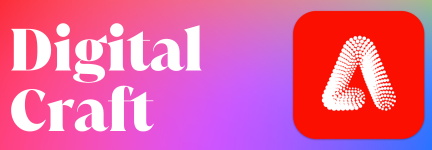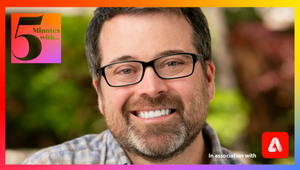
Jay Ganaden on How Adobe’s Firefly Is Lighting the Way to a More Hopeful Future for Gen AI

“When you do a generative art piece, and you key in that prompt, there’s a bit of randomness,” says Jay Gananden. “I liken this to when I used to do a lot of darkroom photography. You’ve got your paper exposed, drop it in the water, and it’s slowly coming to life, in the same way that you’ve got that 90 seconds or so where you’re generating the image.”
These days, Jay Gananden is director, strategic development, pro design at Adobe, and right now, his world is consumed with generative AI and Adobe’s new tool, Firefly. His career, from KPMG consultant to working at tech giants like Google, data businesses, UX design firms and digital forward agencies like Razorfish has led him to this point - a bridge between a tech firm pushing the boundaries of artificial intelligence and the agencies and brands trying to figure out how to use it.
But, his personal passion for photography also gives him an insight and empathy into the creators navigating both the way AI can enhance their practice - as well as trying to figure out how their own work may be used or misused by AI engines.
That empathy, he says, also speaks to Adobe’s creator-centric business. “With Firefly, we wanted to keep creators at the centre - we needed to stay true to our roots,” says Jay. “One of our core values is being creative, right? And that’s not just generating art. It’s challenging yourself to think outside of the way you would normally do things. Being creative, supporting creators, implementing creativity in the way we work has always been part of the way we do things.”
FIrefly isn’t Adobe’s first foray into AI, as it has used elements of artificial intelligence to enhance tools in its platforms like Photoshop and Premiere. However, it does mark Adobe’s flag-planting moment in the world of generative AI specifically. “We’ve been integrating some level of AI into our products for at least the last decade,” says Jay.
So what makes Firefly different from the other Gen AI platforms like Midjourney, DALL-E or Stable Diffusion? One of the biggest controversies to arise from the Gen AI explosion is the way that artists’ work has been scraped from the internet and their styles plagiarised, with no recompense to the artists. FIrefly has been created with the intention of flipping that around, ensuring that artists are compensated as they would be if, say, they licensed out an image to a stock photography library.
“We wanted to make sure that creators are at the centre of this thing,” says Jay. “I mean, creators are at the centre of our business. We didn’t want to introduce a tool that would undermine them - these are the people who create things, and invent things from their minds. They sell a licence, they copyright it - all of those things are important to us and we had to be true to that in the way we made Firefly.”
Back in 2015, Adobe acquired Fotolia, a stock content marketplace with thousands of assets, for $800 million - and that has provided the ideal foundation for Firefly. Overall, Adobe's stock library has millions of images and 3D objects. It feeds a walled garden, where contributing creators can be identified and where inputs can be carefully monitored. “We’re making sure that our images are safe for commercial use. Again, we know it’s ‘good data in, good data out’. We know what the source is, we’re compensating the contributors. Each one of those images has a traceable origin,” says Jay.
Jay says that when he talks to consultancies and agencies, image safety is one of the top concerns that they raise. No one wants to drop their client in the middle of a lawsuit, after all.
But that’s not the only element of safety that Firefly aims to tackle. Another accusation levelled at the Gen AI engines is inbuilt bias, and in some shocking cases, overt sexualisation of images of women and girls in response to completely un-sexual prompts. That’s sort of what happens when you use the whole of the internet as your input data.
“We purposefully excluded let’s say, indecent images, or the ability to make that - and that starts with the keywords and prompts that are used,” says Jay. “So, we have decided to curate that quite tightly because we don’t want this playground to devolve into a different kind of playground. That is something we have controlled.”
Continuing, Jay says: “To the point of diversity, when we were doing the employee beta, we would get results and we would say ‘OK, the results that you get in the first four all have a certain look or race or gender - how can we make it so that the generative art is showing humanity in its many forms?’. There’s people of different ages, there’s people of different races, different sexes.”
While Adobe Firefly is still in beta and won’t be available for commercial use until later this year, Jay has been busy talking to agencies and other businesses, including high profile creative leaders, to help them get their head round it and figure out if and how it might fit into their own workflows.
Those conversations are proving to be as helpful to Adobe as they are to the marketing and agency world, as they get a better understanding of their needs and worries.
“One thing we’re observing, especially with agencies - they like to stand up businesses and practices right? Some that we’re talking about focus solely on AI,” says Jay. “So, that means that they’re testing all of the tools, trying to figure out how it fits into their workflow, trying to standardise on a few that they can tell their creative directors to work with.”
They’re already seeing a range of potential applications when it comes to pitch work and concepting, as well as generating shot lists from scripts. Adobe is also integrating Firefly with its marketing toolset on Experience Cloud, enhancing marketers’ ability to personalise content or engage in dynamic creative optimisation.
Firefly is also part of a year of reinvention of Adobe’s creative tools, with the likes of Photoshop, Illustrator, InDesign and XD under revision for an age of web browser-based creative and design platforms. Jay gets animated when discussing this. With Photoshop, for example, Firefly isn’t just about generating images using AI, but enhancing and editing users’ own images.
“What if I could use this generative art on an image that I’m working on already in Photoshop? What if I go to Barcelona and take this photo, but I really wanted the golden hour sunset light on the city and what I got was flat light?” asks Jay. “I can generate both that lighting and a sort of sunset-y background with the city in the foreground. And that’s imagination, right? But it’s also art direction, to create this using a tool like Firefly with an image I already have. I think that’s the big direction of travel. How does AI integrate with the rest of the tools that people use every day and the things they’re already creating every day?”
Looking further forward, Jay says we may see potential for Firefly within video, or even bringing it into its 3D toolset - for example generating AI textures to overlay onto 3D models - which may have implications for metaverse experiences.
It shouldn’t be too long before agencies, consultancies, producers and marketers get to use these tools in their work, and in the meantime, Jay is having the time of his life working with Adobe’s best and brightest as they continue to develop and refine Firefly.
“It’s definitely something that’s shaking up the industry - and it’s really great to have a front row seat with Adobe.”















